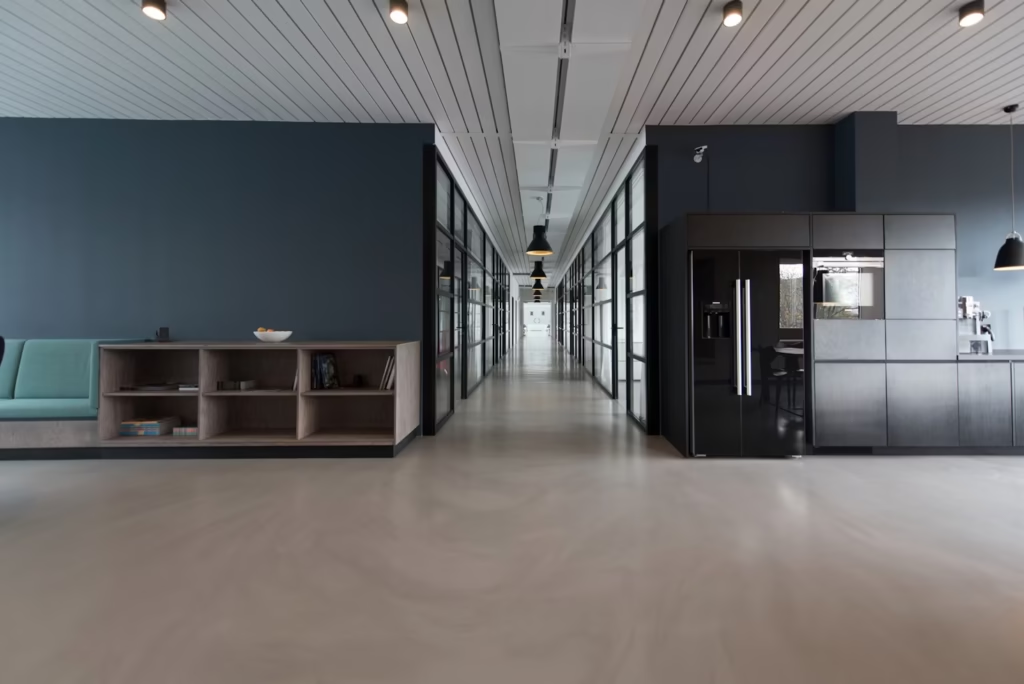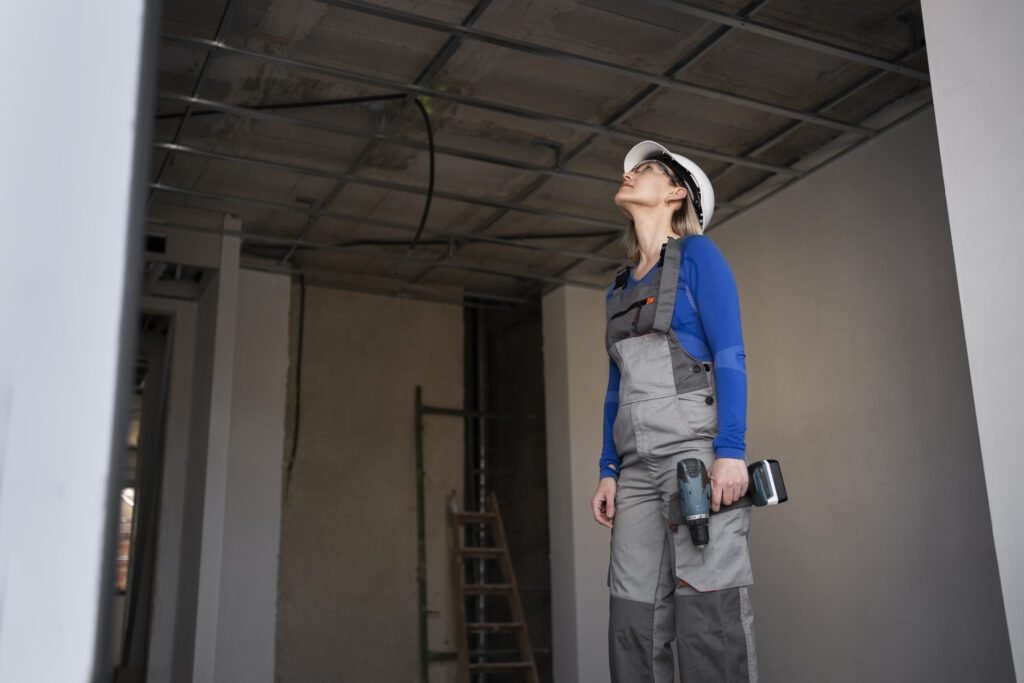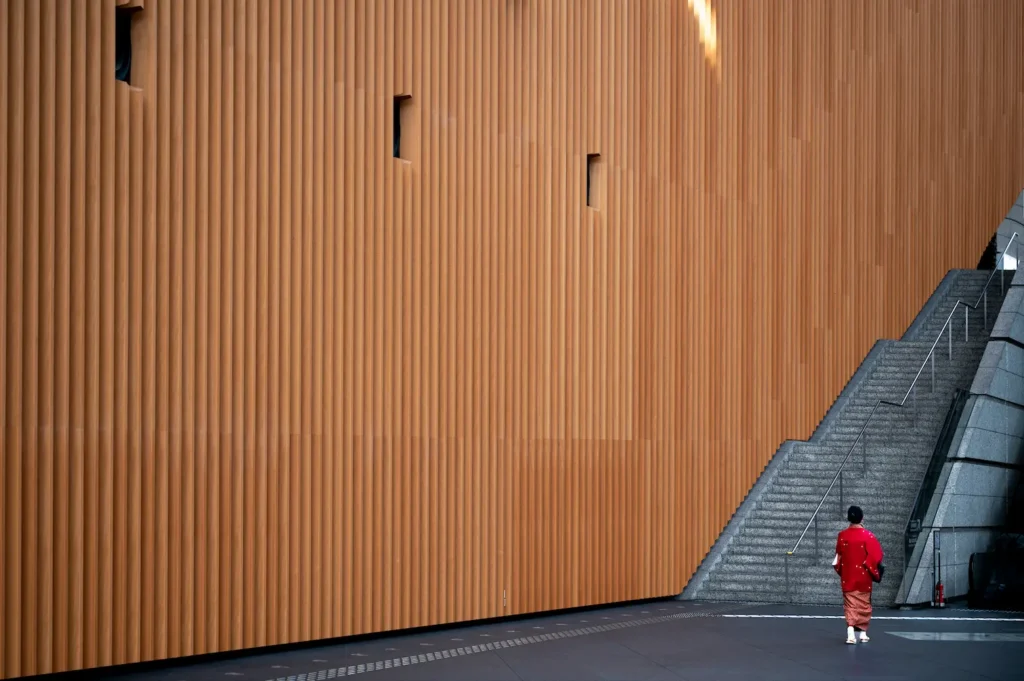7 Creative Ways to Use WPC Wall Panels in Small Urban Apartments

Living in a small urban apartment doesn’t mean sacrificing design. With the right materials like Wood-Plastic Composite (WPC) wall panels, you can transform tight spaces into elegant, functional rooms. Here are 7 real-life, creative ways to use WPC panels and elevate your interior without spending a fortune
1. Accent Wall Behind the Bed
Create a cozy, hotel-style bedroom by installing WPC panels behind your bed. Choose warm wood tones for a natural vibe or go modern with sleek gray textures. Bonus: they’re easy to clean and more durable than painted walls.
2. Visual Illusion in Narrow Hallways
Use horizontal WPC panels in narrow hallways to create the illusion of width. Lighter colors will brighten dark corridors, and the clean, uniform surface adds a premium look.
3. Moisture-Proof Kitchen Backsplash
Forget traditional tiles. WPC panels are water-resistant, easy to install, and have no grout lines. Perfect for renters—they can be removed without damage.
4. Dramatic Living Room Ceiling
Add depth by applying WPC panels to the ceiling, especially in dark shades or marble effects. It draws the eye upward and makes small rooms feel taller.
5. Feature Wall with Floating Shelves
Install WPC panels as a backdrop for wall-mounted shelves. This not only supports the shelves structurally but also makes your books and decor stand out beautifully.
6. Home Office Nook Divider
Use vertical WPC panels to define a small home office corner. You can even install sound-absorbing versions for extra focus.
7. Entryway Style Boost
The entrance sets the tone for your home. Frame your entry with elegant WPC panels, add a few hooks, a mirror, and you’ve got a stylish and practical space.
Top Benefits & Design Trends of Acoustic Wood Walls and WPC Panels

Acoustic wood walls and WPC (Wood-Plastic Composite) panels are revolutionizing modern interior and exterior designs. They provide a unique blend of functionality, aesthetics, and sustainability. In this post, we’ll explore their benefits, the latest design trends, and practical tips for using these materials in your spaces.
What Are Acoustic Wood Walls and WPC Panels?
Acoustic wood walls and WPC (Wood Plastic Composite) panels are versatile design solutions that combine functionality with aesthetic appeal. They are widely used in residential, commercial, and public spaces for their ability to enhance sound quality, provide durability, and elevate interior design. Let’s explore what makes these panels unique and how they can transform your space.
1. Acoustic Wood Walls
Acoustic wood walls are panels made from natural or engineered wood designed to improve a room’s sound quality while adding warmth and elegance.
- Functionality: These panels absorb and reduce sound reflections, minimizing echoes and noise. They are ideal for creating a peaceful and comfortable environment.
- Design Appeal: Available in a variety of finishes, such as oak, walnut, or pine, they can complement modern, rustic, or minimalist interiors.
- Applications: Commonly used in home theaters, offices, conference rooms, and restaurants to ensure sound clarity and a cozy ambiance.
- Tip: Look for panels with slat or perforated designs for optimal acoustic performance without compromising on style.
2. WPC (Wood Plastic Composite) Panels
WPC panels are an innovative product made from a combination of wood fibers and plastic, offering the look of wood with enhanced durability and resistance to environmental factors.
- Durability: Unlike traditional wood, WPC panels are water-resistant, termite-proof, and weather-resistant, making them suitable for both indoor and outdoor use.
- Low Maintenance: These panels require minimal upkeep. A simple wipe is enough to keep them clean and looking fresh.
- Design Variety: Available in different textures, colors, and patterns, WPC panels can mimic natural wood or feature bold, contemporary designs.
- Applications: Perfect for wall cladding, ceilings, facades, or decorative accents in both residential and commercial spaces.
- Tip: Choose WPC panels for high-moisture areas like bathrooms, kitchens, or outdoor patios for long-lasting performance.
How Acoustic Wood Walls and WPC Panels Enhance Your Space
- Soundproofing and Comfort: Acoustic wood walls make spaces quieter and more comfortable, especially in noisy environments.
- Durability and Versatility: WPC panels provide lasting beauty and strength in areas prone to wear and tear.
- Sustainable Choices: Many panels are made from recycled or eco-friendly materials, making them a green design solution.
- Aesthetic Impact: Both options come in a range of styles to match any interior theme, from rustic to ultra-modern.
Top 5 Design Trends for Acoustic and WPC Panels in 2024

1. Sustainable and Eco-Friendly Materials
In 2024, sustainability is at the forefront of interior design. Acoustic and WPC panels made from recycled and eco-friendly materials are gaining popularity.
- Why it matters: Homeowners and businesses want to reduce their carbon footprint while maintaining style.
- What to look for: Panels made from bamboo, reclaimed wood, or recycled plastic. These materials are durable, stylish, and environmentally responsible.
- Tip: Highlight the eco-friendly certifications (e.g., FSC or LEED) of the panels you choose to ensure quality and sustainability.
2. Natural Wood Finishes
Wood-inspired designs are trending, offering a warm and sophisticated aesthetic. Natural tones such as oak, walnut, and ash bring a timeless charm to interiors.
- Why it matters: These finishes fit perfectly in various styles, from modern minimalism to rustic farmhouse.
- What to look for: Panels with realistic wood grains or veneer finishes that mimic natural wood.
- Tip: Pair these panels with neutral or earth-tone color schemes to create a cohesive and inviting look.
3. Bold Geometric Patterns
Geometric designs are making waves in 2024, adding visual interest and depth to walls and ceilings.
- Why it matters: These patterns create a modern and artistic vibe, perfect for accent walls or feature spaces.
- What to look for: Panels with 3D effects, angular shapes, or repeating geometric patterns.
- Tip: Use bold patterns sparingly, such as in a living room or office space, to avoid overwhelming the area.
4. Integrated Acoustic Functionality
With the rise of open-plan spaces and home offices, soundproofing is more critical than ever. Panels that combine stunning design with acoustic properties are a top choice.
- Why it matters: They enhance both the sound quality and the visual appeal of a room.
- What to look for: Acoustic panels designed to reduce noise while complementing your interior design.
- Tip: Use these panels in high-noise areas like conference rooms, living rooms, or bedrooms for a quieter, more comfortable environment.
5. Mixed Textures and Materials
Combining different textures and materials in panels is a major trend, creating a unique and dynamic aesthetic.
- Why it matters: It adds character and dimension to a room, making it visually striking.
- What to look for: Panels that mix wood with metal, fabric, or stone-like finishes.
- Tip: Use textured panels as focal points in spaces like entryways, behind TVs, or around fireplaces to draw attention and create a statement.
Conclusion:
Acoustic and WPC panels in 2024 are all about blending form and function. Whether you’re looking to enhance the aesthetics of your space or improve its acoustics, these trends will help you make the perfect choice. Explore sustainable options, embrace bold patterns, and play with textures to stay ahead in design.
By following these trends, you’ll not only upgrade your interiors but also create spaces that are stylish, comfortable, and future-proof.
Fluted Wall Panels for Exterior Use: A Stylish Solution in Canada

Fluted wall panels have become a cornerstone in modern architecture, offering a seamless blend of aesthetics, durability, and functionality. In Canada, where architectural trends often align with environmental and weather considerations, exterior fluted wall panels are gaining immense popularity. Here’s everything you need to know about these versatile panels, their benefits, and their applications.
What Are Fluted Wall Panels?
Fluted wall panels are characterized by their vertical grooves or ridges, creating a textured, contemporary look. These panels are made from various materials, such as wood, metal, PVC, or composite materials, ensuring adaptability for different design needs. They are particularly favored for exterior applications due to their durability and weather resistance.
Why Choose Fluted Wall Panels for Exterior Use in Canada?
Weather Resistance:
Canadian weather can be unpredictable, with extreme cold, snow, and rainfall. Fluted wall panels designed for exterior use are treated to resist moisture, UV rays, and temperature fluctuations, making them ideal for Canada’s climate.Aesthetic Appeal:
The vertical grooves of fluted panels add depth and sophistication to building facades. Whether you’re renovating a residential home or designing a commercial space, these panels provide a modern and elegant touch.Durability:
Made from robust materials, these panels are designed to last for years with minimal maintenance. Their resistance to warping, fading, and cracking ensures longevity.Sustainability:
Many exterior fluted wall panels in Canada are crafted from eco-friendly materials, aligning with the increasing demand for sustainable building practices.Easy Installation:
Fluted panels are lightweight and designed for hassle-free installation, reducing labor costs and project timelines.
Applications of Exterior Fluted Wall Panels
Residential Homes:
Fluted panels are perfect for enhancing the curb appeal of homes. They can be used as siding, accents around windows and doors, or even to create a statement wall.Commercial Buildings:
Businesses can use these panels to create a professional and inviting facade, especially in retail spaces, office buildings, or restaurants.Public Spaces:
Fluted panels are often used in parks, recreational areas, and institutional buildings to create visually appealing yet functional structures.Hospitality Industry:
Hotels and resorts often incorporate fluted wall panels to create an upscale, modern aesthetic while ensuring durability.
Why Are Fluted Wall Panels Trending in Canada?
Modern Design Trends:
Canadian architects and designers favor clean lines and minimalistic designs, making fluted panels a natural choice.Local Availability:
With suppliers and manufacturers in Canada focusing on fluted wall panels, homeowners and builders can access a wide range of options tailored to local needs.Customizable Options:
These panels come in various colors, finishes, and materials, ensuring they meet diverse aesthetic and functional requirements.
How to Choose the Right Fluted Wall Panels for Your Project
Material Selection:
- Wood: Ideal for a natural, rustic look.
- Metal: Perfect for industrial or modern designs.
- PVC/Composite: Lightweight and low-maintenance.
Finish and Color:
Choose finishes that complement your building’s overall design. Popular choices in Canada include natural wood tones, matte black, and metallic finishes.Weather Resistance:
Ensure the panels are rated for exterior use and can withstand harsh Canadian winters and summers.Installation Method:
Opt for panels that are easy to install, especially if you’re on a tight schedule or budget.
Conclusion
Fluted wall panels for exterior use are more than just a design element—they are a practical solution for enhancing building durability and aesthetics. In Canada, where weather resilience and style go hand in hand, these panels are a top choice for residential, commercial, and public projects.
Whether you’re in Toronto, Vancouver, or Calgary, explore local suppliers offering high-quality fluted wall panels in Canada to transform your space into a masterpiece.
Can You Uninstall and Reinstall WPC or Acoustic Wall Panels

If you’re renting or planning to move, it’s natural to ask: Can wall panels like WPC or acoustic panels be removed and reused? The answer is yes — but it depends on how they were installed.
✅ Key Points:
1. WPC Panels (Wood-Plastic Composite):
If installed with clips/screws: ✅ Easy to remove and reinstall.
If glued with adhesive: ❌ Hard to remove without damage.
Tip: For rentals, choose clip-based or removable adhesive systems.
2. Acoustic Panels:
Usually lightweight and removable.
Often installed with Velcro, double-sided tape, or mounting strips.
Great for renters or studios that need flexibility.
3. Tips for Safe Removal:
Remove panels slowly and evenly to avoid breaking edges.
Store flat and dry to preserve shape.
Always check the installation method before removal.
Best for:
Renters
Temporary installations
Home studios
Offices that may move or change layouts
Final Thought
With proper planning and the right tools, many wall panels can be safely removed and reused. Always consider non-permanent mounting if flexibility is your goal
WPC Wall Panels vs. Traditional Wall Materials

When it comes to wall materials, Wood-Plastic Composite (WPC) wall panels have emerged as a modern, stylish, and practical solution for residential and commercial spaces. How do they stack up against traditional wall materials like wood, drywall, and tiles? Let’s explore the differences and advantages of WPC wall panels.
1. Durability and Longevity
WPC Wall Panels:
Made from a combination of wood fibers and thermoplastics, WPC panels are highly durable and resistant to wear and tear. They can withstand moisture, UV rays, and temperature changes, making them ideal for long-term use.Traditional Materials:
- Wood Panels: Prone to warping, rotting, and termite damage, especially in humid environments.
- Drywall: Easily damaged by moisture and impacts, requiring frequent repairs or replacements.
- Tiles: Durable but can crack under heavy impact and may require regrouting over time.
Winner: WPC panels for their superior resistance to environmental challenges.
2. Maintenance
WPC Wall Panels:
Require minimal maintenance—simply wipe them down with a damp cloth to keep them looking new. They are stain-resistant and do not need polishing or repainting.Traditional Materials:
- Wood Panels: Require regular varnishing or painting to maintain appearance.
- Drywall: Susceptible to dents and scratches that need patching and repainting.
- Tiles: Grout lines can attract dirt and mold, requiring special cleaning products.
Winner: WPC panels for easy and low-cost maintenance.
3. Aesthetic Appeal
WPC Wall Panels:
Offer a wide range of textures, finishes, and colors, including wood-like patterns, marble effects, and modern minimalist designs. They bring a luxurious and elegant touch to any space.Traditional Materials:
- Wood Panels: Classic and warm but limited in texture and prone to fading over time.
- Drywall: Provides a plain and simple finish but requires additional paint or wallpaper for style.
- Tiles: Available in a variety of styles but can feel cold or outdated depending on the design.
Winner: WPC panels for their versatile and modern designs.
4. Installation
WPC Wall Panels:
Easy to install with interlocking systems or adhesive applications. The lightweight material reduces installation time and labor costs.Traditional Materials:
- Wood Panels: Heavier and require precise craftsmanship, leading to higher installation costs.
- Drywall: Time-consuming to install, requiring multiple layers and finishing processes.
- Tiles: Labor-intensive due to grouting and careful alignment.
Winner: WPC panels for quick and cost-effective installation.
5. Environmental Impact
WPC Wall Panels:
Eco-friendly and sustainable, made from recycled materials and free of harmful chemicals like formaldehyde.Traditional Materials:
- Wood Panels: Require deforestation, impacting the environment.
- Drywall: Contains gypsum, which can release sulfur when disposed of improperly.
- Tiles: Energy-intensive manufacturing process with a significant carbon footprint.
Winner: WPC panels for their sustainability and eco-friendly production.
6. Cost
WPC Wall Panels:
While the initial cost may be slightly higher than traditional options, their durability and low maintenance make them a cost-effective choice in the long run.Traditional Materials:
- Wood Panels: Expensive due to material and maintenance costs.
- Drywall: Affordable initially but incurs ongoing repair and maintenance costs.
- Tiles: Moderate to high cost depending on design and quality.
Winner: WPC panels for long-term value.
Contact
- info@walluxco.com
- +1 (514) 660-5588

